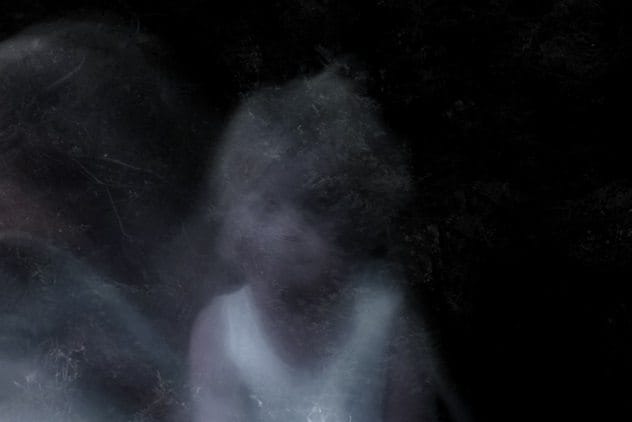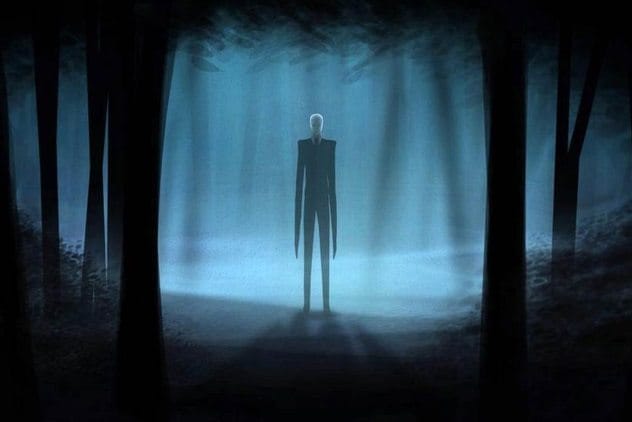Imaginary friends are a common part of childhood. Many kids create companions to play with, share secrets, and navigate the world. But what happens when these imaginary friends aren’t so innocent? Sometimes, the idea of an imaginary friend masks something much darker, leading to strange and unexplained situations.
The Dark Side of Make-Believe: 10 Disturbing Stories
Here are ten perplexing stories where imaginary friends played a role in unsettling and sometimes terrifying events.
10 The Murder Of Ricky Cole

In 2013, Jason Cote brutally beat Ricky Cole to death with a pipe. During the trial, Cote’s lawyers claimed Cole had an imaginary friend named Vern who lived in a black box. According to Cote, Vern told Cole to hurt and murder people, leading Cote to fear for his life and act in self-defense.
The defense argued that drugs in Cole’s system could have made him psychotic and created Vern. However, the prosecution argued that Cote murdered Cole in cold blood over drugs. Ultimately, Jason Cote was sentenced to 45 years in prison in 2016.
9 The Boy In The Closet

When three-year-old Rebecca started talking about her new friend Jonathon who lived in her closet, her parents didn’t think much of it. After the family moved, the new owners of their old home found a trapdoor in Rebecca’s closet. Below it, they discovered a box containing baby pictures and clothes labeled “Jonathon’s.”
This discovery suggests that Rebecca’s imaginary friend might have been more than just a figment of her imagination, hinting at a hidden past within the walls of their old home.
8 Karl-Anthony Towns’s Alter Ego

Basketball player Karl-Anthony Towns has an alter ego named Karlito. He says Karlito is the “little voice” on his shoulder during games. Towns’ teammate, Tyler Ulis, explained that when Towns seems to be looking down and talking to the ground, he is actually talking to Karlito.
Karlito helps Towns manage criticism from his coach and positively influences his game. This unusual coping mechanism has become a part of Towns’ identity, embraced by his team and coaches alike.
7 January Schofield’s Imaginary Friends

By the age of four, January Schofield had numerous imaginary friends who told her to hurt her family dog and baby brother. She would lash out violently, biting her father and attacking windows and doors. Diagnosed with child-onset schizophrenia, January was one of the youngest people in the US with this diagnosis.
Her imaginary friends were actually hallucinations, a symptom of her severe mental disorder. This heartbreaking story highlights the devastating impact of schizophrenia on young children and their families.
6 Jess

In her book Psychic Kids, Lynne Gallagher tells the story of Lorenda and Ben, whose daughter Anna started talking about a little girl named Jess. Jess didn’t want Anna to play with her dollhouse and terrified the family dog. One night, Lorenda saw a strange girl next to Anna, singing a lullaby. The girl vanished, leaving behind a pool of blood after the dog barked at her.
This paranormal encounter suggests that Anna’s imaginary friend was a real entity, a ghost from the Victorian-era house. The terrifying experience left the family shaken and questioning the nature of reality.
5 Bleeder

Rylan, born with issues due to his mother’s drug use, was adopted by Kim and Ryan. By age seven, he was obsessed with knives and had an imaginary friend named Bleeder, a robot who told him to murder his family. Rylan even cut off his fingertips because Bleeder told him to.
Appearing on Dr. Phil, his parents sought help, fearing he would become a mass murderer. This disturbing case illustrates the dangerous influence an imaginary friend can have on a child with pre-existing psychological problems.
4 Eric

In 2013, 19-year-old Logan Fischer tied up his girlfriend and tried to smother her. He claimed that his childhood imaginary friend, Eric, was responsible for the attack. Fischer said Eric told his girlfriend to cut him with a knife, but she refused.
The police didn’t believe his story, and Logan was charged with battery and strangulation. This case highlights how imaginary friends can be used as a false defense in criminal acts.
3 Laughing Jack

Laughing Jack is an urban legend about a creepy clown who befriends children, then turns on them, gruesomely mutilating them and filling their bodies with candy. In 2015, a 12-year-old girl from Indiana stabbed her stepmother to death and claimed Laughing Jack instructed her.
The girl suffered from PTSD and dissociative identity disorder and was deemed unfit to stand trial. This chilling story shows how urban legends can manifest in the minds of disturbed individuals with tragic consequences.
2 Meme Turned Myth Turned Imaginary Friend

In 2014, two 12-year-old girls from Wisconsin stabbed their friend 19 times, nearly killing her. They claimed that Slender Man, a tall, faceless creature, told them to do it to protect their families.
Slender Man originated as a meme and became a creepypasta before influencing the girls to commit a heinous act. This case demonstrates the power of the internet and how fictional characters can impact vulnerable minds, leading to real-world violence.
1 Casey Anthony’s Made-Up Life

Casey Anthony was found not guilty of murdering her daughter Caylee in 2011, despite strong evidence suggesting her guilt. She was convicted of providing false information to police, but that was an understatement. Casey created a fictitious world with imaginary friends and events.
She claimed to work at Universal Studios, invented a nanny named Zenaida who kidnapped Caylee, and concocted a boyfriend named Jeff Hopkins with a mother suffering from cancer. Despite the lies and inconsistencies, Casey Anthony remains a free woman, leaving many questioning the justice system.
Conclusion
These stories reveal the unsettling ways imaginary friends can intertwine with reality. From serving as scapegoats for heinous crimes to manifesting as terrifying hallucinations, the line between fantasy and reality can blur with frightening consequences. Whether rooted in mental illness, paranormal phenomena, or simply a twisted attempt to evade responsibility, these tales remind us of the power—and potential danger—of the human imagination.
What do you think about these stories? Share your thoughts below!










